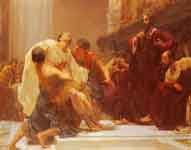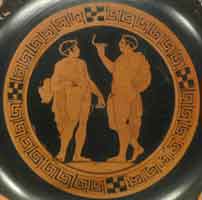.
Berühmte Griechische Athleten
Ladas crossed the stadium length either by jumping it or on wings; his speed was demoniac, nor could it possibly be described. An epigramme about Ladas, a famous Spartan endurance runner and sprint victor.
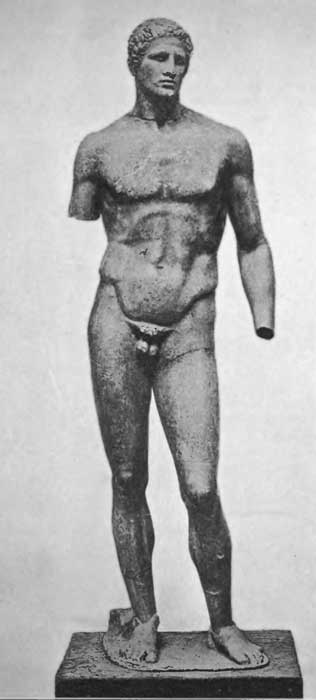
2.09 m statue of Agias of Pharsalos, a Pancration champion, (probably not showing the real Agias as it was produced much later, after his death), marble copy of bronze original, c. 336 BC, Delphi Museum, Greece (his brother Telemachos also next to him, not shown here). (Another higher quality image) Part of a large monument. Probably most of the sculptures do not show the original athlete who is recognized by the inscription but are more ideal images of an athlete. Part of the Daochos monument at Delphi. Reconstruction Image ( E.Gardner, K.Smith p.52)
The habit of representing winners of athletic games, especially at Olympia, was also established in the sixth century (Pausanias 6. 15. 8 and 18. 7; and 8. 40. 1-2). When athletes had won three times, their "effigies" were called "iconicae" and were "ex membris ipsorum similitudine expressae" (Pliny 34. 16). In this case, the reproduction of an individual’s features sometimes entailed the reproduction of the sizes of the parts of his body. Antonio Corso, The Position of Portraiture in Early Hellenistic Art Criticism.
Heracles was an athlete, Zeus was the only competitor but he changed his appearance. Only after the competition when none of the two could win Zeus was recognized by Heracles.
Agias of Pharsalos (Αγίας) the pancration Olympionike (before 480 BC probably 484 BC), statue by Lysippos of Sikyon. Agias was the great grandfather of Daochos II who dedicated the monument at Delphi. Daochos II was a political ally of Philip and Alexander of Macedon.
Perseus about Agias Reconstruction of the Daochos Monument, Delphi
Astylos of Crotona (Αστύλος) was famous because he was an athlete for Crotona but later for Syracuse expecting to win favour from the tyrant of Syracuse Hieron. The Crotonians were angry and destroyed his house and his statue. Victories in the three successive Olympiads from 488 to 480 BC (73th to 75th Olympiad) in stadion and diaulos race. Crotonias were very successful in footraces and other sport events.
The statue of Astylus of Crotona is the work of Pythagoras; this athlete won three successive victories at Olympia, in the short race and in the double race. But because on the two latter occasions he proclaimed himself a Syracusan, in order to please Hiero the son of Deinomenes, the people of Crotona for this condemned his house to be a prison, and pulled down his statue set up by the temple of Lacinian Hera. Pausanias
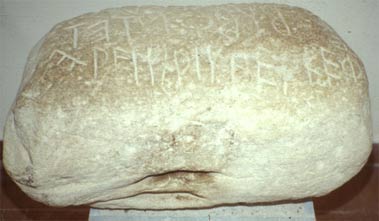
Bybon, son of Pholos, 6th century BC, a weightlifter known from a 143 kg stone in Olympia that he lifted over his head with only one hand. Inscription: Bybon son of Pholos tossed this over his head with one hand.Another example Eumastas, son of Critobulus, who according to an inscription on a larger stone (around 400 kg) from Santorini lifted the stone from the ground.
Callipus of Athens, pentathlet
Cleitomachus, 216 BC. “ He was considered to be a quite invincible boxer, and his fames had spread over the whole world, when Ptolemy IV, ambitious to destroy his reputation, trained with the greatest care and sent off the boxer Aristonicus, a man who seemed to have a remarkable natural gift for this sport. Upon this Aristonicus arriving in Greece and challenging Cleitomachus at Olympia, the crowd, it seems, at once took the part of the former and cheered him on, delighted to see that some one, once in a way at least, ventured to pit himself against Cleitomachus. And when, as the fight continued, he appeared to be his adversary's match, and once or twice landed a telling blow, two great clapping of hands, and the crowd became delirious with excitement, cheering on Aristonicus. At this time they say that Cleitomachus, after withdrawing for a few moments to recover his breath, turned to the crowd and asked them what they meant by cheering on Aristonicus and backing him up all they could. Did they think he himself was not fighting fairly, or were they not aware that Cleitomachus was now fighting for the glory of Greece and Aristonicus for that of King Ptolemy? Would they prefer to see an Egyptian conquer the Greeks and win the Olympian crown, or to hear a Theban and Boeotian proclaimed by the herald as victor in the men's boxing-match? When Cleitomachus had spoken thus, they say there was such a change in the sentiment of the crowd that now all was reversed, and Aristonicus was beaten rather by the crowd than by Cleitomachus.“ Polybius , The Histories, Fragments of Book XXVII
Cleomedes of Astypalaea (Κλεομήδης) 492 BC. An athlete who dissapeared. A strange story about this athlete who got crazy after a decision by the chief judges of the Games. At the Festival previous to this it is said that Cleomedes of Astypalaea killed Iccus of Epidaurus during a boxing-match. On being convicted by the umpires of foul play and being deprived of the prize he became mad through grief and returned to Astypalaea. Attacking a school there of about sixty children he pulled down the pillar which held up the roof. This fell upon the children, and Cleomedes, pelted with stones by the citizens, took refuge in the sanctuary of Athena. He entered a chest standing in the sanctuary and drew down the lid. The Astypalaeans toiled in vain in their attempts to open the chest. At last, however, they broke open the boards of the chest, but found no Cleomedes, either alive or dead. So they sent envoys to Delphi to ask what had happened to Cleomedes. The response given by the Pythian priestess was, they say, as follows: Last of heroes is Cleomedes of Astypalaea; Honour him with sacrifices as being no longer a mortal. So from this time have the Astypalaeans paid honours to Cleomedes as to a hero. Pausanias
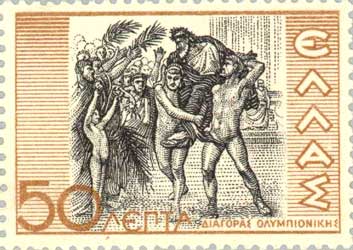
A great moment of Hellenic Olympic history. “Die Diagoras, for you can never reach the heavens.“ Diagoras of Rhodes on the shoulders of Damagetos and Akousilaos. “The death of a good man is nothing to be sad about, since it puts him beyond the power of fortune and secures his happiness for eternity.” Plutarch, Pelopidas
Diagoras of Rhodes (Διαγόρας) a boxer. Victor in the 79th Olympiad, 464 BC. His sons' and grandsons' also became boxing and pancration winners and in the 83rd Olympiad his sons Damagetos and Akousilaos lifted their father Diagoras on their shoulders in the stadium. Diagoras was also a winner in the Isthmia Games (4 times) and 2 times winner in Nemea. His other son Dorieus and the two sons of his daughter were also winners in various Games.
By these is set up a statue of Eucles, son of Callianax, a native of Rhodes and of the family of the Diagoridae. For he was the son of the daughter of Diagoras, and won an Olympic victory in the boxing match for men. His statue is by Naucydes ...When you have looked at these also you will reach the statues of the Rhodian athletes, Diagoras and his family. These were dedicated one after the other in the following order. Acusilaus, who received a crown for boxing in the men's class; Dorieus, the youngest, who won the pancratium at Olympia on three successive occasions. Even before Dorieus, Damagetus beat all those who had entered for the pancratium. These were brothers, being sons of Diagoras, and by them is set up also a statue of Diagoras himself, who won a victory for boxing in the men's class. The statue of Diagoras was made by the Megarian Callicles, the son of the Theocosmus who made the image of Zeus at Megara. The sons too of the daughters of Diagoras practised boxing and won Olympic victories: in the men's class Eucles, son of Callianax and Callipateira, daughter of Diagoras; in the boys' class Peisirodus, whose mother dressed herself as a man and a trainer, and took her son herself to the Olympic games. This Peisirodus is one of the statues in the Altis, and stands by the father of his mother. The story goes that Diagoras came to Olympia in the company of his sons Acusilaus and Damagetus. The youths on defeating their father proceeded to carry him through the crowd, while the Greeks pelted him with flowers and congratulated him on his sons. The family of Diagoras was originally, through the female line, Messenian, as he was descended from the daughter of Aristomenes. Pausanias
Diophon, Pentathlon Champion in Isthmia and Pythia.
Dioxippus the pancratiast
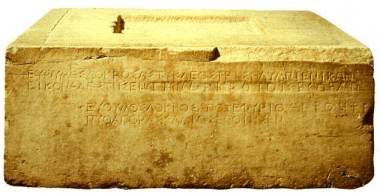
Euthymus of Locris, (Εύθυμος) from Locri Epizephyrii three times winner in the boxing event in Olympia (484, 476 and 472 BC). Statue based inscription (to be admired by mortals) and “produced by Pythagoras of Samos” (not the mathematician).
But it would not be right for me to pass over the boxer Euthymus, his victories and his other glories. Euthymus was by birth one of the Italian Locrians, who dwell in the region near the headland called the West Point, and he was called son of Astycles. Local legend, however, makes him the son, not of this man, but of the river Caecinus, which divides Locris from the land of Rhegium and produces the marvel of the grasshoppers. For the grasshoppers within Locris as far as the Caecinus sing just like others, but across the Caecinus in the territory of Rhegium they do not utter a sound. This river then, according to tradition, was the father of Euthymus, who, though he won the prize for boxing at the seventy-fourth Olympic Festival, was not to be so successful at the next. For Theagenes of Thasos, wishing to win the prizes for boxing and for the pancratium at the same Festival, overcame Euthymus at boxing, though he had not the strength to gain the wild olive in the pancratium, because he was already exhausted in his fight with Euthymus. Thereupon the umpires fined Theagenes a talent, to be sacred to the god, and a talent for the harm done to Euthymus, holding that it was merely to spite him that he entered for the boxing competition. For this reason they condemned him to pay an extra fine privately to Euthymus. At the seventy-sixth Festival Theagenes paid in full the money owed to the god, . . . and as compensation to Euthymus did not enter for the boxing-match. At this Festival, and also at the next following, Euthymus won the crown for boxing. His statue is the handiwork of Pythagoras, and is very well worth seeing. Pausanias
"he received cult in his own lifetime; he fought with and overcame the ‘Hero of Temesa’, a daimon who in ritual deflowered a virgin in the Italian city of Temesa every year; Bruno Currie: Euthymos of Locri: a case study in heroization in the Classical period, JHS 122 (2002)
Eupolos from Thessaly (Εύπωλος) was famous because he paid his opponents in order to become Olympionike (388 BC).
For Eupolus of Thessaly bribed the boxers who entered the competition, Agenor the Arcadian and Prytanis of Cyzicus, and with them also Phormio of Halicarnassus, who had won at the preceding Festival. This is said to have been the first time that an athlete violated the rules of the games, and the first to be fined by the Eleans were Eupolus and those who accepted bribes from Eupolus. Pausanias
Ganas of Pellene, 512 BC the first triast (3 victories on the say day) Olympia (stadion, diaulos and hoplite race)
Glaucus of Carystus ,
Next to those that I have enumerated stands Glaucus of Carystus. Legend has it that he was by birth from Anthedon in Boeotia, being descended from Glaucus the sea-deity. This Carystian was a son of Demylus, and they say that to begin with he worked as a farmer. The ploughshare one day fell out of the plough, and he fitted it into its place, using his hand as a hammer;
Demylus happened to be a spectator of his son's performance, and thereupon brought him to Olympia to box. There Glaucus, inexperienced in boxing, was wounded by his antagonists, and when he was boxing with the last of them he was thought to be fainting from the number of his wounds. Then they say that his father called out to him, "Son, the plough touch." So he dealt his opponent a more violent blow which forthwith brought him the victory.
He is said to have won other crowns besides, two at Pytho, eight at the Nemean and eight at the Isthmian games. The statue of Glaucus was set up by his son, while Glaucias of Aegina made it. The statue represents a figure sparring, as Glaucus was the best exponent of the art of all his contemporaries. When he died the Carystians, they say, buried him in the island still called the island of Glaucus. Pausanias
Hermogenes of Xanthus, (Ερμογένης ο Ίππος) a Lydian, 8 times Olympionike in 81, 85 and 89 AD in running events (he was called the “horse”), a two times triast (81 and 89 AD)
Herodoros of Megara (Ηρόδωρος) a man with gigantic size. Winner of the trumpeter's competition in ten consecutive Olympiads (328-292 BC). He was such a successful trumpeter that Dimitrios Poliorcetes used him as a trumpeter in a war against Argos.
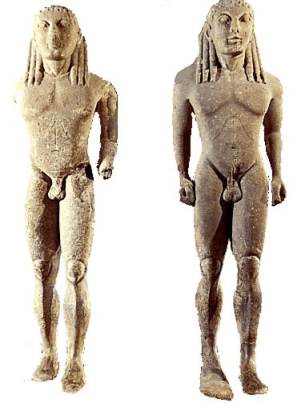
The brothers Kleobis and Biton, 590 BC, Delphi, Greece
Kleobis and Biton from Argos ((Κλέοβις και Βίτων)) wrestlers. Herodotus writes a story about these brothers and their mother Cydippe:
When Solon had provoked him by saying that the affairs of Tellos were so olbios, Croesus asked who he thought was next, fully expecting to win second prize. Solon answered, "Kleobis and Biton." They were Argive in genos, they had enough to live on, and on top of this they had great bodily strength. Both were prize-winning athletes [athlophoroi], and this story is told about them: There was a festival of Hera in Argos, and their mother absolutely had to be conveyed to the sacred precinct by a team of oxen. But their oxen had not come back from the fields in time [hôra], so the youths took the yoke upon their own shoulders under constraint of time. They drew the wagon, with their mother riding atop it, traveling 45 stadia until they arrived at the sacred precinct. When they had done this and had been seen by the entire gathering, their lives came to the best fulfillment [ariston telos], and in their case the god made clear that for human beings it is better to be dead than to live. The Argive men stood around the youths and congratulated them on their strength; the Argive women congratulated their mother for having such children. She was overjoyed at the feat and at the praise, so she stood before the image and prayed that the goddess might grant the best thing for humanity to her children Kleobis and Biton, who had given great timê to the goddess. After this prayer they sacrificed and feasted. The youths then lay down in the sacred precinct and went to sleep, and they never got up again; they remained in the pose that they had assumed in reaching their telos. The Argives made and dedicated at Delphi statues of them, since they were aristoi. Images: 1 ,2 , 3
Korebos (or Coroebus) of Elis (Κόροιβος), a cook as suggested from "mageiros" but probably a title of a priest, first winner of the Olympic Games (sprint race 1 stadion).Probably the shortest of the Olympic Games with only one event that took a few seconds!
This I can prove; for when the unbroken tradition of the Olympiads began there was first the foot-race, and Coroebus an Elean was victor. There is no statue of Coroebus at Olympia, but his grave is on the borders of Elis. Afterwards, at the fourteenth Festival, the double foot-race was added: Hypenus of Pisa won the prize of wild olive in the double race, and at the next Festival Acanthus of Lacedaemon won in the long course. Pausanias
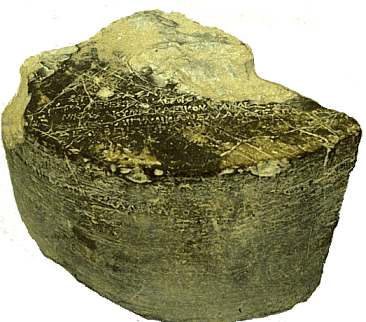
Sculpture base for Kyniska of Sparta
Kyniska (or Cynisca) (Κυνίσκα), a daughter of the Spartan King Agesilaus II, trained horses that won at the Olympic Games. The owner was proclaimed a winner even without participating in the event (four horses chariot race in 396, 392 BC)
Archidamus had also a daughter, whose name was Cynisca; she was exceedingly ambitious to succeed at the Olympic games, and was the first woman to breed horses and the first to win an Olympic victory. After Cynisca other women, especially women of Lacedaemon, have won Olympic victories, but none of them was more distinguished for their victories than she. Pausanias
At the base of her statue an inscription proclaimed that she was the first woman to become an Olympic champion in a chariot race: "Kings of Sparta were my forefathers and my brothers. Victorious Cynisca with her chariot drawn by swift-footed horses erected this statue. I assert that I am the only woman in all Greece who has won this crown. Made by Apelleas, son of Kallikles." (Paus. III 15m 1-2; see also Anth. Palat. XIII 16t.IIp.537) Another woman of Sparta, Euryleonis also won a victory in the Olympic Games in a biga race (a chariot drawn by two horses - Paus. V 8,11). Berenice the Benefactor, wife of Ptolemy III is also mentioned as an Olympic champion in a quadriga race (Drumann, zu Rosett. Insts.p. 88). Finally, Zeuxo, daughter of Ariston from Cyrene, is also mentioned as an Olympic victor in a chariot race. It is known to us from an inscription that women won victories also in other games, the Erotidia, organized in honour of the god Eros in Thespiae of Boetia. One of them was Eucrateia, daughter of Polycrates, who won a biga race. Another daughter of Polycrates whose name, however, is lost to us, also won a victory in the Olympic Games. Nikos Yalouris WOMEN IN ANCIENT GREECE THEIR CONTRIBUTION TO LETTERS, SCIENCE, POLITICS AND SPORT

Westmacott Athlete, maybe a version of a work Kyniskos of Polykleitos
Kyniskos (or Cyniscus) of Mantineia (Κυνίσκος), a boy boxer (statue from Polykleitos of Argos).
The statue of Cyniscus, the boy boxer from Mantinea, was made by Polycleitus. Pausanias
Ladas of Argos (Λάδας), winner of the dolichos at 460 BC he was said to be so fast that he almost was flying as he did not leave tracks on the ground of the stadium (See the epigram at the Top of this page)
Leonidas of Rhodes (Λεωνίδας) four-time Olympic running champion. He was a winner in the stadion, diaulos, and hoplitodromos and he won all three events for 4 consecutive Olympiads. (12 victories)
However, the most famous runner was Leonidas of Rhodes. He maintained his speed at its prime for four Olympiads, and won twelve victories for running. Pausanias
Mandrogenes (Μανδρογένης) a pancratist. Philostratos writes about Mandrogenes (Gymn. 23 & 273): I myself heard him say that he owed his victories to his coach, who once wrote to his mother "If you ever hear that your son has died, you may believe it, but if you ever hear that he has been beaten at the Games, you should not believe it". (Kleanthis Palaiologos)
The boxer Melankomas of Caria (Μελανκόμας) winner of the 207th Olympiad, 49 AD. He could remain for two days with his hands outstretched before him and nobody saw him change position or take a rest Dion Chrysostomos
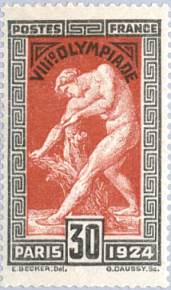
Stamp of Milo of Crotona
... if ten pounds are too much for a particular person to eat and two too little, it does not follow that the trainer will order six pounds; for this also is perhaps too much for the person who is to take it, or too little—too little for Milo, too much for the beginner in athletic exercises. Aristotle Nicomachean Ethics, Book II.6
The wrestler Milo of Croton (Μίλων) several times Olympic champion for around 26 years. He won the boys wrestling in the 60th Olympiad in 540 BC, five-time wrestling champion from the 62nd to the 66th Olympiad, (532 to 516 BC). He wore a lion-skin cloak and carried a club like Hercules, very impressive athlete as he was eating 8 kg meat each day. Some say that he even once carried to the Olympic stadium a four-year old bull on his shoulders that he slaughter and devour it. Milo was not only a wrestler but also a musician a poet and a student of Pythagoras the mathematician and Philosopher.
The statue of Milo the son of Diotimus was made by Dameas, also a native of Crotona. Milo won six victories for wrestling at Olympia, one of them among the boys; at Pytho he won six among the men and one among the boys. He came to Olympia to wrestle for the seventh time, but did not succeed in mastering Timasitheus, a fellow-citizen who was also a young man, and who refused, moreover, to come to close quarters with him. It is further stated that Milo carried his own statue into the Altis. His feats with the pomegranate and the quoit are also remembered by tradition. He would grasp a pomegranate so firmly that nobody could wrest it from him by force, and yet he did not damage it by pressure. He would stand upon a greased quoit, and make fools of those who charged him and tried to push him from the quoit. He used to perform also the following exhibition feats. He would tie a cord round his forehead as though it were a ribbon or a crown. Holding his breath and filling with blood the veins on his head, he would break the cord by the strength of these veins. It is said that he would let down by his side his right arm from the shoulder to the elbow, and stretch out straight the arm below the elbow, turning the thumb upwards, while the other fingers lay in a row. In this position, then, the little finger was lowest, but nobody could bend it back by pressure. They say that he was killed by wild beasts. The story has it that he came across in the land of Crotona a tree-trunk that was drying up; wedges were inserted to keep the trunk apart. Milo in his pride thrust his hands into the trunk, the wedges slipped, and Milo was held fast by the trunk until the wolves -- a beast that roves in vast packs in the land of Crotona -- made him their prey. Such was the fate that overtook Milo. Pausanias
Is this story true? Probably Milo as a member of the Pythagoras school (his wife Myia was a daughter of Pythagoras) was killed by some opponent of this school (maybe one who was rejected as a member) The Pythagoreans assembled at the house of Milo, the wrestler,who was an eminent general, and the most illustrious of the disciples were stoned to death, the house being fired. Porphyry according to Edward Bulwer-Lytton, Athens: Its Rise and Fall
A famous “athlete” was Nero, the Emperor of Rome, 6 “victories”. In around 67 AD he was accompanied by 5000 Romans who were paid to applaud him. Although he felt from his chariot during the race and could not finish he was declared a winner. The Games had to start 2 years earlier because Nero required this. His trip: September 66 Nero left for Greece, Performances at Olympic, Isthmian, Nemean and Pythian Games. November 67 Freedom of the Greeks declared at Isthmian Games. Early in 68 Nero returned to Italy, and committed suicide later that year. The Greeks (especially from Elis) considered the Olympic Games with Nero as a “non-Olympiad” like the three Games that were held by the people of Pisa.. Nero in Greece (PDF)
When I considered this act of Nero it struck me how true is the remark of Plato, the son of Ariston, who says that the greatest and most daring crimes are committed, not by ordinary men, but by a noble soul ruined by a perverted education. Pausanias
Orsippus of Megara (Όρσιππος) probably the first nude runner of the Olympia foot race in 720 BC
Near Coroebus is buried Orsippus who won the footrace at Olympia by running naked when all his competitors wore girdles according to ancient custom. They say also that Orsippus when general afterwards annexed some of the neighboring territory. My own opinion is that at Olympia he intentionally let the girdle slip off him, realizing that a naked man can run more easily than one girt. Pausanias
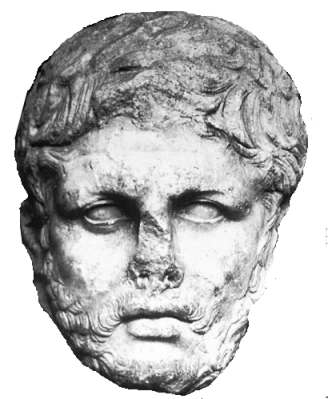
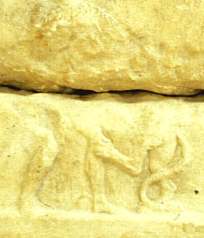
Polydamas of Skotoussa and base of a statue showing him fighting with a lion.
Polydamas of Skotoussa (Πολυδάμας) winner of the 93th Olympiad (408 BC) a wrestler that once had to fight simultaneously with 3 of the best wrestlers of Dareius II Ochon, the king of Persia. He killed 2 while the third Persian wrestler run away. Legend says that he killed a lion like Hercules with his bare hands. Polydamas died in a cave in when he tried to hold the collapsing mountain up with his arms. Pausanias saw the statue of Polydamas at Olympia and wrote (VI, 5, 1) "And he on a high pedestal, the work of Lysippus, greater than all men, except for those called heroes,and of any other race that preceded mankind, and of contemporary men, Polydamas the Nicean is the greatest. Julian the African (Euseb. 93rd Olymp.) wrote: The oversize Polydamas won at the pancration, he who in Persia, in front of King Ochon, naked and unarmed, killed lions, had a duel with three of the fully armed bodyguard of the king, of those called the immortals "and killed them. The same man stopped chariots which were moving at full speed.
Polydamas lost against the pancratist Promachus of Pellene (Πρόμαχος). His coach said to him that a maiden which Promachus loved so much said to him : I do not consider him unworthy of my love, provided he proves himself victor at Olympia". Promachus was well pleased with the words that he heard, in spite of the fact that the coach had lied to him in order to boost him. Indeed he did not only win (404 BC) but he was victorious over his great opponent the famous athlete Polydamas. (Kleanthis Palaiologos)
Similar to Astylos was the story of Sotades from Crete a winner in the dolichos event at the 99th Olympiad, but in the subsequent Olympiad he granted victory to Ephessus. The Cretans were angry and he was not allowed to return to Crete.
Sotades at the ninety-ninth Festival was victorious in the long race and proclaimed a Cretan, as in fact he was. But at the next Festival he made himself an Ephesian, being bribed to do so by the Ephesian people. For this act he was banished by the Cretans. Pausanias
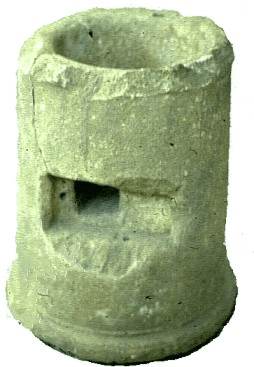
Altar from circular shrine of Theagenes of Thasos with inscription
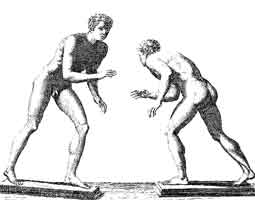
Theagenes of Thasos, (Θεαγένης) Pankration Boxer, Runner.

Satyros of Elis (Σάτυρος) 332 and 328 BC victory in Olympia, Head by Silanion. Is this a real image of Satyros as can be seen from the typical boxer nose?
Satyros of Elis, son of Lysianax, of the clan of the Iamidae, won five victories at Nemea for boxing, two at Pytho, and two at Olympia. The artist who made the statue (at Olympia) was Silanion, an Athenian, Pausanias
Stamp of Satyros from Upper Volta C14; C17a.
In a Pancration event in Nemea in 400 BC Creugas (or Kreugas) of Epidamnos and Damoxenos of Syracuse struggle for hours without a decision. Creugas and Damoxenos agreed that each would accept an undefended blow. Creugas delivered first a punch to his opponent's head. Still standing, Damoxenos jabbed Creugas with his fingers straight out, piercing his rib cage. Damoxenos yanked out his intestines, killing him on the spot. Damoxenos was expelled, although seemingly on a technicality: The judges deemed the disemboweling to be several blows (one for each finger) instead of the single agreed-upon blow. (Info from Betsy Carpenter : The First Olympics , U.S. News 1/8/04.) Antonio Canova prooduced the sculptures of "Creugas and Damoxenos", in the Gabinetto Canova of the Vatican Gallery.
Sostratus of Sikyon. (Σώστρατος) An Olympia winner of Pankration from 364-356 BC. Also winner at the Nemean, Isthmian and other events.
Next to the statue of Lysander is an Ephesian boxer who beat the other boys, his competitors -- his name was Athenaeus, -- and also a man of Sicyon who was a pancratiast, Sostratus surnamed Acrochersites. For he used to grip his antagonist by the fingers and bend them, and would not let go until he saw that his opponent had given in. He won at the Nemean and Isthmian games combined twelve victories, three victories at Olympia and two at Pytho. The hundred and fourth Festival, when Sostratus won his first victory, is not reckoned by the Eleans, because the games were held by the Pisans and Arcadians and not by themselves, Pausanias
Zopyrus of Athens victory in Pankration (385 AD?) one if not the last known athletes (after a discovery of a new list with the names of 20 athletes in 2001 in Olympia that extends the previously known list of athletes from 277 AD now to to 385 AD. (other sources say that the last athlete known was Varazdates from Armenia in 385 AD)
The first winners in athletic events
Stadion (στάδιο) since 776 BC, first winner Coroebus of Elis.
Diaulos (δίαυλος) since 724 BC, 14th Olympiad, first winner Hypenus of Elis.
Dolichos (δόλιχος) (long race) since 720 BC, 15th Olympiad, first winner Acanthus of Laconia.
Hoplitodromos (οπλιτόδρομος, οπλίτης) since 520 BC in Olympia, first winner Damaretus of Heraea, 65th Olympiad.
Wrestling (πάλη), since 708 BC, 18th Olympiad, first winner Eurybatus of Laconia.
Boxing (πυγμή), since 688 BC, 23th Olympiad, first winner Onomastus of Smyrna.
Pancration (παγκράτιο), from pan krates i.e. all strenght, wrestling (648 BC, 33th Olympiad, first winner Lygdamis of Syracuse.
Pentathlon (πένταθλον) since 708 BC, 18th Olympiad first winner Lampis of Laconia.
Horse and Chariot games since 680 BC, first winner Pagon of Thebes.
REMARKS
According to a report I have seen a horse (his name was Aura) has been declared as a victor in 528 BC when it crossed the finishing line without the charioteer on board (who felt from the chariot just after the start). Usually the owner of the horses was declared as a victor and not the charioteer so I cannot confirm if this story is true.
In 404 BC Lasthenes a Olympian Champion wins a race against a horse over a distance of 30 kilometers (a story that is too amazing to be true)
The first champion of the modern Olympic Games:
Leonidas Pyrgos, the first Greek Olympic medallist in the history of the modern Olympic Games
Greek Athletes: Medal Winners from 1896 to 2000
QUOTES
He (Aristotle) also wrote a great number of works; and I have thought it worth while to give a list of them... one book, the Conquerors at the Olympic Games; one, the Conquerors at the Pythian Games in the Art of Music; one, the Pythian; one, a List of the Victors in the Pythian Games; one, the Victories gained at the Olympic Games; Diogenes Laertios biography of Aristotle
STORIES
From a Lecture: Alexander the Great was a good athlete. In Athens he was matched against an Olympic runner. When the latter appeared to slacken his pace deliberately, Alexander was very indignant.
LINKS
The Story of the Marathon run: What is the reason that Philippides, the Marathon Man, died?
THE POSITION OF THE ATHLETE IN SOCIETY IN ANCIENT GREECE (PDF File)
FAMED ATHLETES OF ANCIENT GREECE (PDF File )
Deborah Steiner, Moving Images: Fifth-Century Victory Monuments and the Athlete’s Allure, Classical Antiquity 17 ,1998
References
Stephen G. Miller, Ancient Greek athletics , Yale University Press , ISBN 0300100833
| Ancient Greece
Science, Technology , Medicine , Warfare, , Biographies , Life , Cities/Places/Maps , Arts , Literature , Philosophy ,Olympics, Mythology , History , Images Medieval Greece / Byzantine Empire Science, Technology, Arts, , Warfare , Literature, Biographies, Icons, History Modern Greece Cities, Islands, Regions, Fauna/Flora ,Biographies , History , Warfare, Science/Technology, Literature, Music , Arts , Film/Actors , Sport , Fashion --- |

